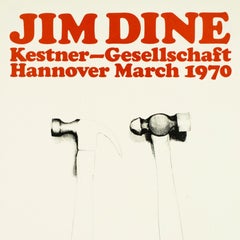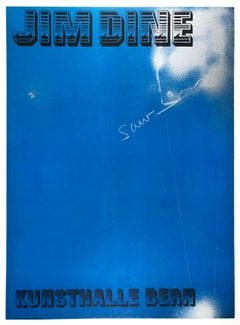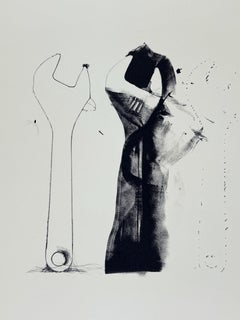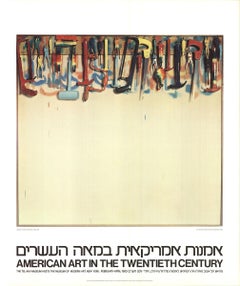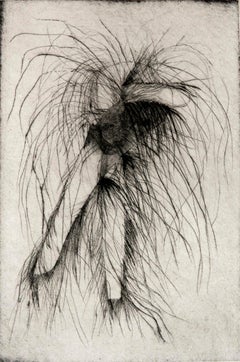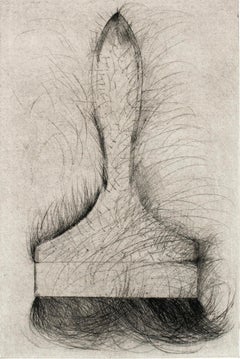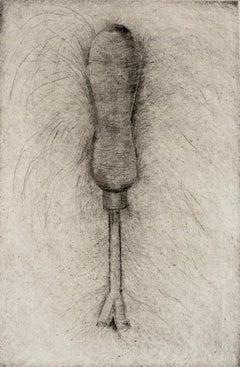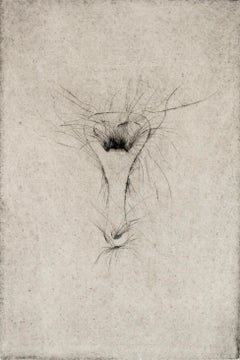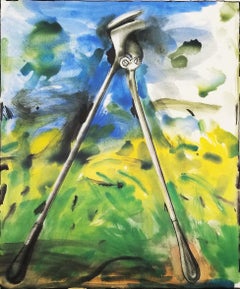Jim Dine Tools
1970s Pop Art Still-life Prints
Lithograph
1970s Pop Art Figurative Prints
Paper, Offset
1970s Pop Art Figurative Prints
Lithograph
20th Century Pop Art Prints and Multiples
Offset
1970s Modern Figurative Prints
Drypoint
1970s Modern Figurative Prints
Drypoint
1970s Modern Figurative Prints
Drypoint
1970s Modern Figurative Prints
Drypoint
1980s Pop Art Still-life Prints
Lithograph
1970s Pop Art Figurative Prints
Drypoint
1970s Pop Art Figurative Prints
Drypoint
1970s Modern Figurative Prints
Drypoint
Late 20th Century Prints and Multiples
Lithograph
1960s Pop Art Interior Prints
Screen, Paper
1960s Contemporary Figurative Prints
Screen, Paper
1980s Abstract Expressionist Abstract Prints
Etching
1980s Still-life Prints
Aquatint, Etching
1980s Abstract Abstract Prints
Etching, Aquatint
21st Century and Contemporary Pop Art Prints and Multiples
Lithograph
20th Century Contemporary Prints and Multiples
Screen
20th Century Contemporary Prints and Multiples
Screen
1970s Contemporary Still-life Prints
Lithograph
1970s Contemporary Still-life Prints
Lithograph
1960s Pop Art Abstract Prints
Screen
1970s Pop Art Still-life Prints
Lithograph
1970s Pop Art Still-life Prints
Lithograph
1970s Contemporary Figurative Prints
Lithograph
1970s Modern Figurative Prints
Drypoint
Late 20th Century Prints and Multiples
Lithograph
Late 20th Century Prints and Multiples
Lithograph
1980s Still-life Prints
Etching, Aquatint
1960s Pop Art Abstract Prints
1980s Prints and Multiples
1970s Prints and Multiples
1980s Prints and Multiples
Jim Dine Tools For Sale on 1stDibs
How Much are Jim Dine Tools?
Jim Dine for sale on 1stDibs
The Ohio-born artist Jim Dine brought his ever-shifting, multidisciplinary vision to New York in 1958, a time of transition in the American art world. Abstract Expressionism, which had dominated the scene for years, was on the wane, and a group of young artists, including Dine, Allan Kaprow, Jasper Johns and Robert Rauschenberg, was eager to replace it with a movement that flipped the traditional rules of art-making on their head.
Beyond dissolving the boundaries between mediums and genres, attaching found objects and detritus to their canvases, these revolutionaries began staging performative “happenings” in public spaces, redefining the very definition of a work of art. As Pop art took form, Dine used objects with personal significance, like his paintbrushes, to transform his paintings into two-dimensional sculptures. He was included in the Norton Simon Museum’s 1962 “New Painting of Objects,” often considered the first true Pop art exhibition in America, but he remained a chameleon, constantly changing his style, material and technique.
More than his contemporaries, Dine has forged new paths in drawing, scrawling words and names across the canvas to create graphic, abstract landscapes. He is obsessed by certain motifs — such as hearts and his own bathrobe — which recur in various forms throughout his oeuvre. He has occasionally worked in classical genres, such as portraiture, as exemplified by the 1980 aquatint Nancy Outside in July. He has also co-opted the bold, graphic vocabulary of advertising and commercials, as in the sleek 2010 composition Gay Laughter at the Wake.
Find Jim Dine prints and other art on 1stDibs.
Finding the Right Prints And Multiples for You
Decorating with fine art prints — whether they’re figurative prints, abstract prints or another variety — has always been a practical way of bringing a space to life as well as bringing works by an artist you love into your home.
Pursued in the 1960s and ’70s, largely by Pop artists drawn to its associations with mass production, advertising, packaging and seriality, as well as those challenging the primacy of the Abstract Expressionist brushstroke, printmaking was embraced in the 1980s by painters and conceptual artists ranging from David Salle and Elizabeth Murray to Adrian Piper and Sherrie Levine.
Printmaking is the transfer of an image from one surface to another. An artist takes a material like stone, metal, wood or wax, carves, incises, draws or otherwise marks it with an image, inks or paints it and then transfers the image to a piece of paper or other material.
Fine art prints are frequently confused with their more commercial counterparts. After all, our closest connection to the printed image is through mass-produced newspapers, magazines and books, and many people don’t realize that even though prints are editions, they start with an original image created by an artist with the intent of reproducing it in a small batch. Fine art prints are created in strictly limited editions — 20 or 30 or maybe 50 — and are always based on an image created specifically to be made into an edition.
Many people think of revered Dutch artist Rembrandt as a painter but may not know that he was a printmaker as well. His prints have been preserved in time along with the work of other celebrated printmakers such as Pablo Picasso, Salvador Dalí and Andy Warhol. These fine art prints are still highly sought after by collectors.
“It’s another tool in the artist’s toolbox, just like painting or sculpture or anything else that an artist uses in the service of mark making or expressing him- or herself,” says International Fine Print Dealers Association (IFPDA) vice president Betsy Senior, of New York’s Betsy Senior Fine Art, Inc.
Because artist’s editions tend to be more affordable and available than his or her unique works, they’re more accessible and can be a great opportunity to bring a variety of colors, textures and shapes into a space.
For tight corners, select small fine art prints as opposed to the oversized bold piece you’ll hang as a focal point in the dining area. But be careful not to choose something that is too big for your space. And feel free to lean into it if need be — not every work needs picture-hanging hooks. Leaning a larger fine art print against the wall behind a bookcase can add a stylish installation-type dynamic to your living room. (Read more about how to arrange wall art here.)
Find fine art prints for sale on 1stDibs today.
- Why did Jim Dine paint hearts?1 Answer1stDibs ExpertFebruary 22, 2021Jim Dine painted hearts because he was a self-described romantic artist. He embraced the heart because he believed it was a shape with boundless possibilities and a complex meaning. He explored relationships of color, texture and composition through the heart.
- What is Jim Dine famous for?1 Answer1stDibs ExpertAugust 15, 2024Jim Dine is famous for his work as an artist. He brought his multidisciplinary vision to New York in 1958, a time of transition in the American art world. Abstract Expressionism, which had dominated the scene for years, was waning, and a group of young artists, including Dine, Allan Kaprow, Jasper Johns and Robert Rauschenberg, was eager to replace it with a movement that flipped the traditional rules of art-making on its head. As Pop art took form, Dine used objects with personal significance, like his paintbrushes, to transform his paintings into two-dimensional sculptures. He was included in the Norton Simon Museum’s 1962 “New Painting of Objects,” often considered the first true Pop art exhibition in America, but he remained a chameleon, constantly changing his style. Dine has forged new paths in drawing, scrawling words and names across the canvas to create graphic, abstract landscapes. Some of his best-known works include his Tool Box series, Four Hearts, Tinsnip and The Robe. On 1stDibs, shop a range of Jim Dine art.
